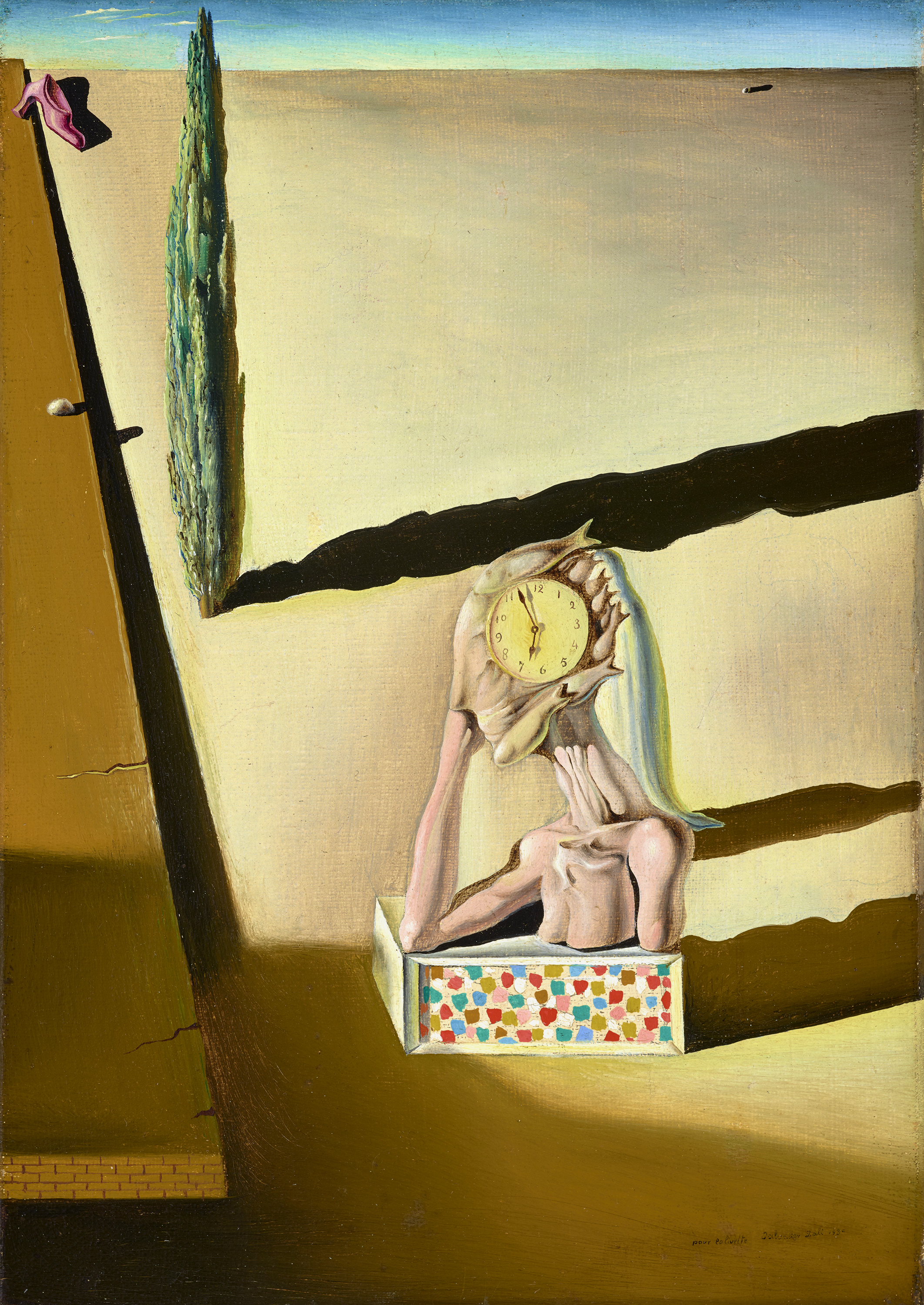Important early Surrealist work by Salvador Dalí - L’homme poisson - acquired by Meadows Museum
Meadows Museum acquires an important early Surrealist work by Spanish artist Salvador Dalí, L’homme poisson.

DALLAS (SMU) – The Meadows Museum at SMU has acquired an important work by Salvador Dalí (1904-1989), one of the most influential artists of the 20th century and a prominent member of the Surrealist movement.
 L’homme poisson will be shown as the central point of Salvador Dalí: An Early Surrealist Masterpiece at the Meadows Museum. |
L’homme poisson, an oil-on-canvas painting from 1930, is a splendid example of work created during what is one of the Spanish artist’s most prolific and creative period.
Only one year later Dalí painted The Persistence of Memory (1931, The Museum of Modern Art, New York), an iconic work that includes some of the artist’s most recognizable imagery. Notably, both paintings were shown in the first American exhibition of Surrealist art in 1931. The acquisition of L’homme poisson was made possible by the generosity of the following donors: The Meadows Foundation; Holly and Doug Deason; Mrs. Eugene McDermott; Linda P. and William A. Custard; and Gwen and Richard Irwin.
It will be featured in an exhibition at the Meadows Museum from January 30 – June 19, 2016.
The Meadows Museum has one of the foremost collections of Spanish art in the world — spanning the 10th through 21st centuries; consequently, the museum is able to present this masterwork within the broad context of the historic sweep of Spanish art. Mark Roglán, Director of the Meadows Museum at SMU, underscores the importance of the new acquisition. “We did not seek just any Dalí for the Meadows Museum, but specifically a work from the 1930s, one of the artist’s most fertile and creative periods, and the one during which he became aligned with the Surrealist movement.” He adds, “This work fills in a significant void within our collection. While we have works on paper, this is our first acquisition of a Dalí painting and it strengthens our modern art holdings considerably. It is also a work of historic relevance, since it is one of only a handful of the artist’s works exhibited in the first Surrealist show in America.”
Curatorial Assistant, Shelley DeMaria, notes, “The Meadows’ exhibition featuring the newly-acquired Dalí will be a focused show within one of the Virginia Meadows galleries, and is meant to provide a comprehensive look at various aspects of the painting, including historic relevance and artistic process. On view will be didactics and images discussing the painting’s significant inclusion in the 1931 exhibition at the Wadsworth Atheneum. We will also present for the first time the infrared and X-ray images of L’homme poisson, which were part of an extensive study of the painting performed by Claire Barry, chief conservator at the Kimbell Art Museum. These images reveal interesting details about Dalí’s meticulous process, for example changes made to the painting’s composition.” She adds, “A selection of works on paper by Dalí, which provide further insight into the artist’s trajectory, will also be on view; these include prints and illustrated books from both the museum and SMU campus collections, including Bridwell Library, DeGolyer Library, and the Bywaters Special Collections at Hamon Arts Library.”
 Salvador Dalí |
At the time L’homme poisson was created, Dalí was entering what is widely deemed the apex of his career and many experts contribute this robust period to his encounter with Gala, his wife — and, by his own admission, his muse. Interestingly, on the bottom-right edge of L’homme poisson is an inscription, “pour l’olivette.” This was the artist’s affectionate term for Gala and pays homage to her oval face and olive-toned complexion. Born Helena Deluvina Diakanoff (1894 -1982), Gala was married to the French poet Paul Éluard when she first encountered Dalí; however, she immediately recognized the genius of the flamboyant painter and they married five years after their initial meeting.
Linda Perryman Evans, president and CEO of The Meadows Foundation, notes, “The acquisition of L’homme poisson marks a new milestone in achieving Algur H. Meadows’ dream to create a ‘small Prado in Texas.’ What a great way to end the 50th anniversary celebration, which also started with an important acquisition, Portrait of Mariano Goya, the Artist’s Grandson (Francisco de Goya, 1827)!”
“The Meadows Museum is a paramount source of pride for SMU, and this new Dalí painting adds dimension and scope to the museum’s distinguished collection,” said SMU President R. Gerald Turner. “We are grateful to The Meadows Foundation for their generosity in making this outstanding acquisition possible. The Dalí exhibition marks an auspicious time in the historic partnership between SMU and The Meadows Foundation. It falls on the close of the fiftieth anniversary for the museum and the centennial celebration for the university. The importance of both institutions is integral to the lives of our students; however, they also enrich the community through permanent collections, exhibitions, and educational programming.”
L’homme poisson signals an important juncture for Dalí. His acceptance by André Breton (1896-1966), the leader of the surrealist group, occurred 1929, the year prior to the work’s creation. Additionally, the painting also exemplifies the artist’s unique dreamlike imagery that defined his career. Along with works by other Spanish artists, such as María Blanchard, Juan Gris, Joan Miró and Pablo Picasso, L’homme poisson provides yet another outstanding touchstone for the Meadows’ collection of 20th-century art.
Meadows Museum
The Meadows Museum is the leading U.S. institution focused on the study and presentation of the art of Spain. In 1962, Dallas businessman and philanthropist Algur H. Meadows donated his private collection of Spanish paintings, as well as funds to establish a museum, to Southern Methodist University. The museum, which opened to the public in 1965, today is home to one of the largest and most comprehensive collections of Spanish art outside of Spain. The collection includes medieval objects, Renaissance and Baroque sculptures, and major paintings by Golden Age and modern masters. Through the years, The Meadows Foundation has continued to provide generous support for the Meadows Museum and Meadows School of the Arts at SMU.
###
Media Contacts:
Laurey Peat
Laurey Peat + Associates
LPeat@lpapr.com
214-‐871-‐8787
Carrie Hunnicutt
Meadows Museum
chunnicutt@smu.edu
214-‐768-‐1584